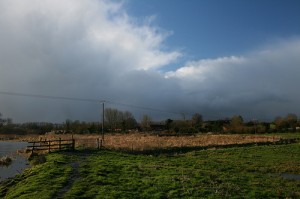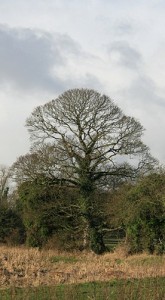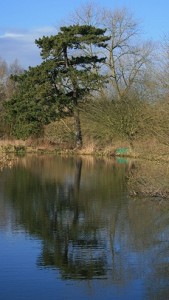
Hail from a passing squall stung our faces as we walked upstream from Oxnead. A reminder that we cannot take the arrival of the weak Spring sunshine for granted. As we pressed on the clouds moved southwards and the sun light broke through and created a dramatic contrast. Colour leaped from the highlighted trees and the shapes of their bare winter crowns gained new depth. Around the village  the variety of trees gives texture to the landscape. a sycamore, so often
the variety of trees gives texture to the landscape. a sycamore, so often damned as a species, shows as a beautiful dome marking the edge of the ploughed lands and the start of the marsh. A Scots Pine sits over a gentle curve of the Bure, its reflection set with the pristine clarity of a Japanese print. Below the Hall Beech, Oak and the spiralling bark of the Chestnut provide an arboretum’s grandeur.
damned as a species, shows as a beautiful dome marking the edge of the ploughed lands and the start of the marsh. A Scots Pine sits over a gentle curve of the Bure, its reflection set with the pristine clarity of a Japanese print. Below the Hall Beech, Oak and the spiralling bark of the Chestnut provide an arboretum’s grandeur.
